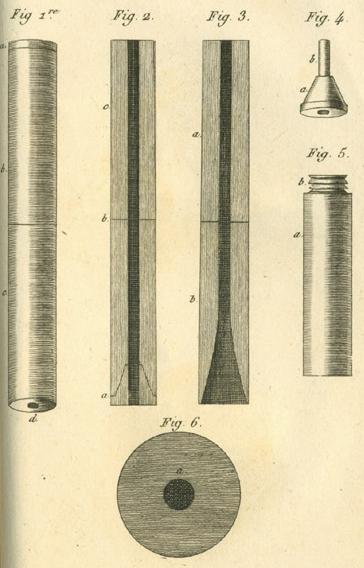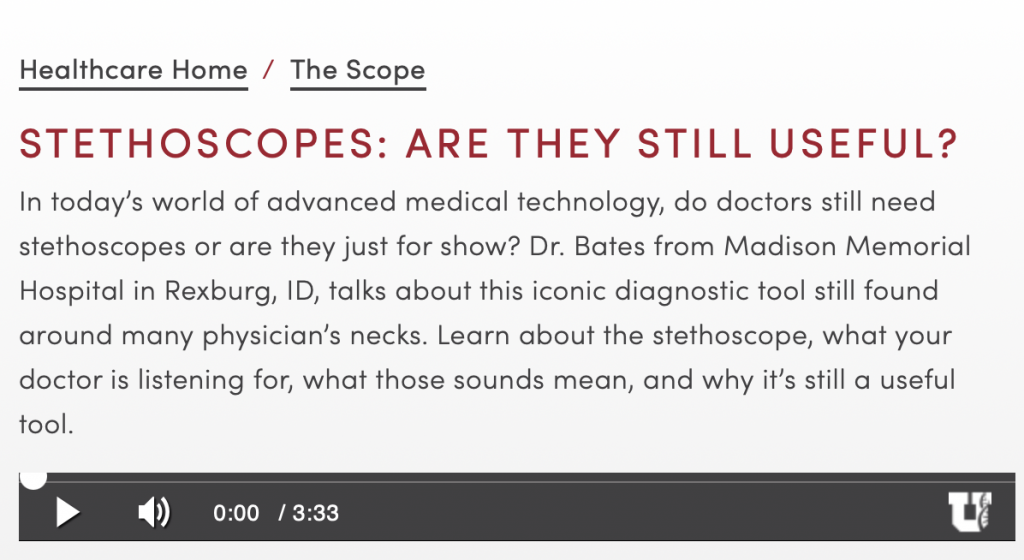What was the first thought in your mind after reading the word stethoscope?

For me, the first thing I see is a doctor, in a white coat, checking the heartbeat of a patient or a doctor with a stethoscope around their neck, running towards a coding patient. 5 seconds in, I remember my first stethoscope. It barely worked and you could not hear a loud, clear heartbeat but I was in high-school when I got it so I definitely did not deserve good, working stethoscopes that are for big-shot, qualified doctors, right?
A Stethoscope is a diagnostic instrument that is used by the doctor to auscultate heart, lung and bowel sounds (“What Sounds Does A Cardiologist Hear Through A Stethoscope?). I found this paraphrased definition at 3 different websites. It so easily mentions that a doctor uses a stethoscope while in reality nurses, physician assistant, interns all use them. This is a story of how stethoscope started to define class and educational qualifications of a person. This is a story of how a stethoscope, a mere object, is a symbol that gives a person the power to save lives. This is a story of how a stethoscope stands for a white coat.
The early stethoscope was created in 1819 (History Of The Stethoscope) which followed by major improvements throughout the next century. Most of this was discovered/ invented by Europeans which is something you would expect knowing the fact that Europeans led the Industrial revolution and developed a lot of tools that we use today. Who else would the creators be? However, in today’s world it has access and effect on everyone. Wait, not everyone only those who do the “Real Work” as tag lined by the American Diagnostic Corporation, a brand that manufactures stethoscopes, thermometers and such products.

What is it that a stethoscope provides that makes the work so real? A lot of people save lives- Policemen, Firemen, or even a friend who talked down someone who about to commit suicide. However, the credit always goes to the person with the stethoscope. When I was job-shadowing a doctor, I first hand noticed how many people work to save a life without having a medical degree but they are not even noticed let alone thanked. It has a lot to do with the stethoscope which is considered to be the hallmark of a doctor. It is about their powerful medical identity. A study suggests that even with new, and more accurate diagnostic technologies, doctors prefer to use a stethoscope as now it is a symbol of the skill and the knowledge that they possess (Rice).
So, are stethoscopes even useful anymore or are they just a symbol? Stethoscopes is still an important object that is the first step to provide diagnosis to a patient, however, it also tells a patient you are doctor, it is an identity, a classic picture (Stethoscopes: Are They Still Useful). It helps form a relation between the patient and a doctor(Littmann). It helps a patient not feel like a number and seals the relationship of trust between the patient. For instance, when my younger sister was admitted to the hospital for Typhoid, the doctor that came in for night rounds tried hearing her chest sounds from over a thick blanket. This built in a prejudice against him that he was not a good doctor because it was impossible to hear anything over a blanket and essentially the meaningful connection with a patient was never formed. Moreover, for a blood drive, a doctor who was supposed to give donors a check up did not bother to put the hearing aid of the stethoscope in his ears and explained that he could still hear it from around his neck. All donors believed it because he was the one with the stethoscope hung around his neck so he effectively was correct regardless of how inaccurate his theory was and he was suspended that evening. The method of using a stethoscope has become an essential determinant of the qualifications of a doctor. Not only that the type of the stethoscope matters as well. The color, the brand, the inscription all act as an object for the public to classify doctors to be qualified or not qualified.
Video on the usefulness of Stethoscopes: https://healthcare.utah.edu/the-scope/shows.php?%20shows=0_tibiic2j

The amusing thing is car mechanics were also originally referred to as ‘auto-doctors’ (Krebs). Human doctors and auto-doctors both used sound as a primary diagnostic tool to find out what was not working well. However, in 1950’s and 1960’s both fields developed other investigative and diagnostic tools such as X-rays and oscilloscopes, respectively. However, now stethoscopes are easily related to the medical professionals; courtesy of adding a stethoscope in every poster, movie, image, advertisement related to medicine. However, the medical community continues to debate on the true effectiveness of the usage of stethoscope because it can not be standardised and is very subjective. Especially, because you need imaging for accurate diagnosis. This is analogous to television where a picture without sound can be interpreted but sound with no picture makes no sense.
Stethoscope is an object that has so much power. However, it may not even do what it is supposed to do perfectly. Yes, it does indicate that there might be a problem but with the current technological advances, it is a symbol that separates out a class of people classified by their occupation and level of skill. Wearing a stethoscope changes the identity of a person from a student to a doctor. It gives a person the authority to save live, to wear a “white coat”, which is a whole different conversation. It has access to change every human, pets and maybe a car’s life but still not everyone has access to use it because to be able to put this object around your neck requires decades of education and practice. Starting out from a tube with a flat protrusion at one end to ending up with 500 different variations ranging between 20 to 500 dollars, a stethoscope has impacted the world so much in terms of social relations and perceived identity, even if it has different identities. For some, it is a diagnostic tool; for some, it is their identity; for some, a replica of Grey’s Anatomy ( a medical TV show); for some it is an object of trust; for some, a motif for advertisement. For me, it is a vision of who I want to be.
Citations:
“What Sounds Does A Cardiologist Hear Through A Stethoscope? – Kidsheart.Com”. Kidsheart.Com, https://www.kidsheart.com/what-sounds-does-a-cardiologist-hear-through-a-stethoscope/.
“History Of The Stethoscope | American Diagnostic Corporation”. Adctoday.Com, 2021, https:// www.adctoday.com/learning-center/about-stethoscopes/ history-stethoscope
“‘The Hallmark Of A Doctor’: The Stethoscope And The Making Of Medical Identity – Tom Rice, 2010”. SAGE Journals, 2010, https://journals.sagepub.com/doi/ 10.1177/1359183510373985
“Stethoscopes: Are They Still Useful?”. Healthcare.Utah.Edu, https://healthcare.utah.edu/the-scope/shows.php? shows=0_tibiic2j
“Patient Experience: The Clinician Connection With Patients, Matters”. Littmann, https://www.littmann.com/3M/en_US/ littmann-stethoscopes/advantages/promotions/clinician- patient-connection/. Accessed 15 Mar 2021
The Art of Stethoscope Use: Diagnostic Listening Practices of Medical Physicians and ‘Auto-Doctors’, https://www.jstor.org/ stable/43488022?seq=13#metadata_info_tab_contents. Accessed 15 Mar 2021